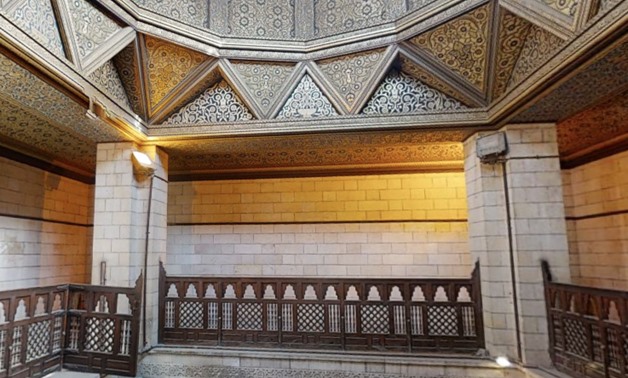
Screenshot of virtual tour brought by Egypt's Tourism & Antiquities Min. & Virtual Mid East Company.
CAIRO – 25 June 2020: Egypt’s Ministry of Tourism and Antiquities presents a virtual tour of one of the oldest palaces and a unique architectural masterpiece, the Manasterly Palace located at the Southern end of Rawda Island.
To watch the virtual tour please use the following Url:
https://my.matterport.com/show/?m=NYV1YmfPM3w&fbclid=IwAR2ViuyiKGgP8rAotcjUPpOiHM1kpRIzafLct_dZPYPhunpLCUo75BNRBaE
This palace (which was called the kiosk) was established by Hassan Fouad Pasha al-Manasterly during the reign of Abbas Toson bin Muhammad Ali Pasha. It consists of a covered rectangular hall, a wing on the western side that includes a living room, two bedrooms, and a bathroom, and another room on the eastern side.
There is also a balcony of wood surrounding it from the western and southern sides, overlooking the Nile through a threefold pan made of wood; roofs are decorated with geometric and floral motifs. The facades of the kiosk are crowned with a flap of wood in the form of the Egyptian corniche, decorated with colored motifs on the wood.
Ali Pasha Mubarak mentioned in the compromise plans that late Hassan Fouad Pasha al-Manasterly constructed a palace and a kiosk at the southern side of the island of Al-Rawda on the ruins of Sultan Najm al-Din Palace, which dates back to the Ayyubid era. Sultan Najm al-Din Palace was among the buildings of Al-Rawda Castle, which was built by El-Malek el-Saleh Najm al-Din in the year 638 AH. Manasterly Pasha also built a small mosque in the place of the Al-Muqayyas Mosque, which was built in the Fatimid period.
There is a painting in the mosque, which includes the date of Hassan Fouad Pasha al-Manasterly's death on 1276 AH, who was at the time serving as the minister of interior.
The Nile Meter was also found in the palace. The meter is considered one of the Egyptian architectural installations aimed to measure the water levels in the Nile River. It was built by Osama bin Zaid, the worker of the abscess, in Al-Rawda Island in 96 AH (715 CE) and was re-used in the following year.
Historians have agreed that the Nile Meter was built in the year 247 AH (861 CE) as per the order of al-Mutawakkil, the Abbasid caliph while others attributed it to the Caliph al-Mamun.
This virtual tour was launched in cooperation between the Ministry of Tourism and Antiquities, and Virtual Mid East Company.

Comments
Leave a Comment